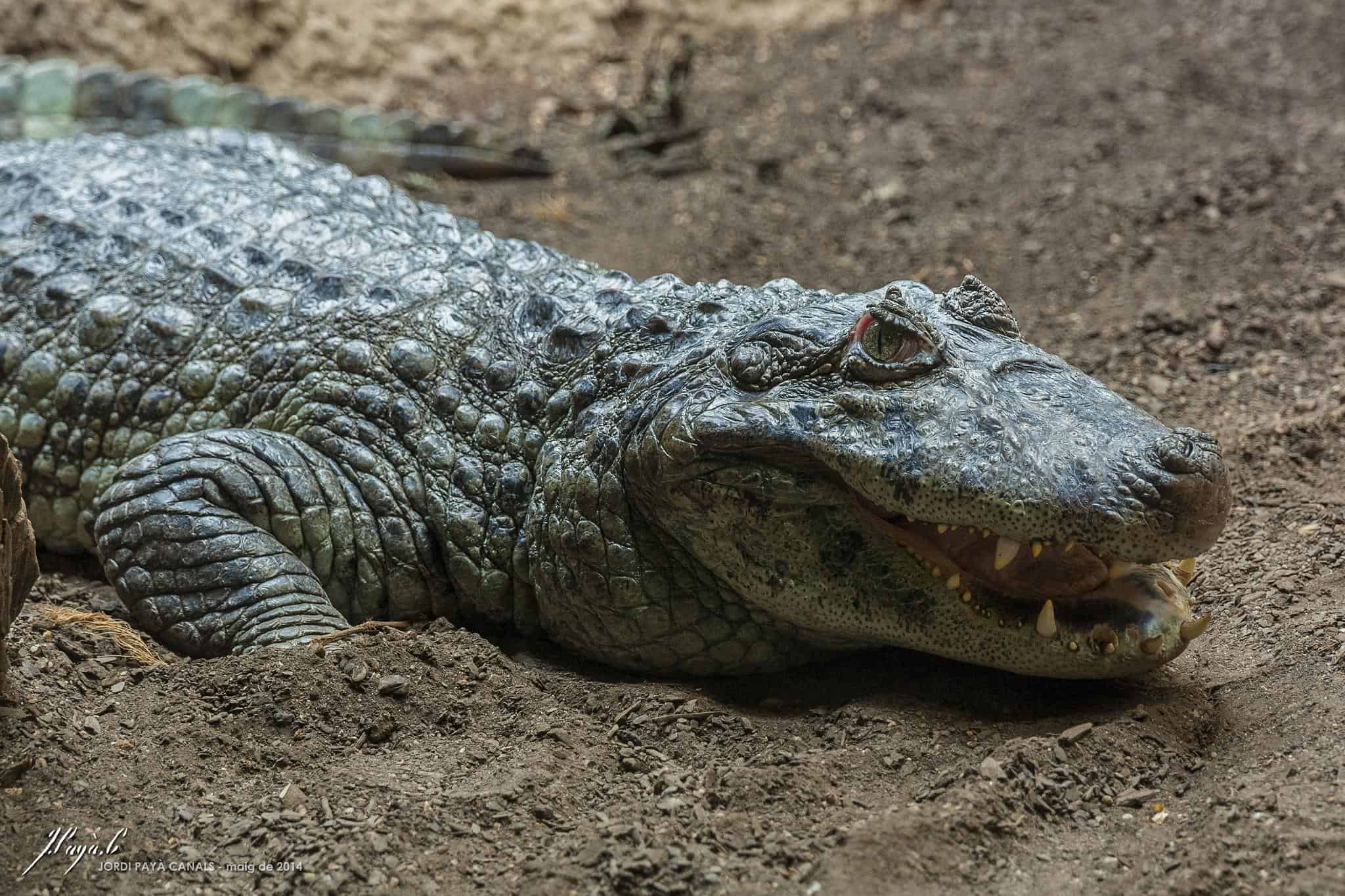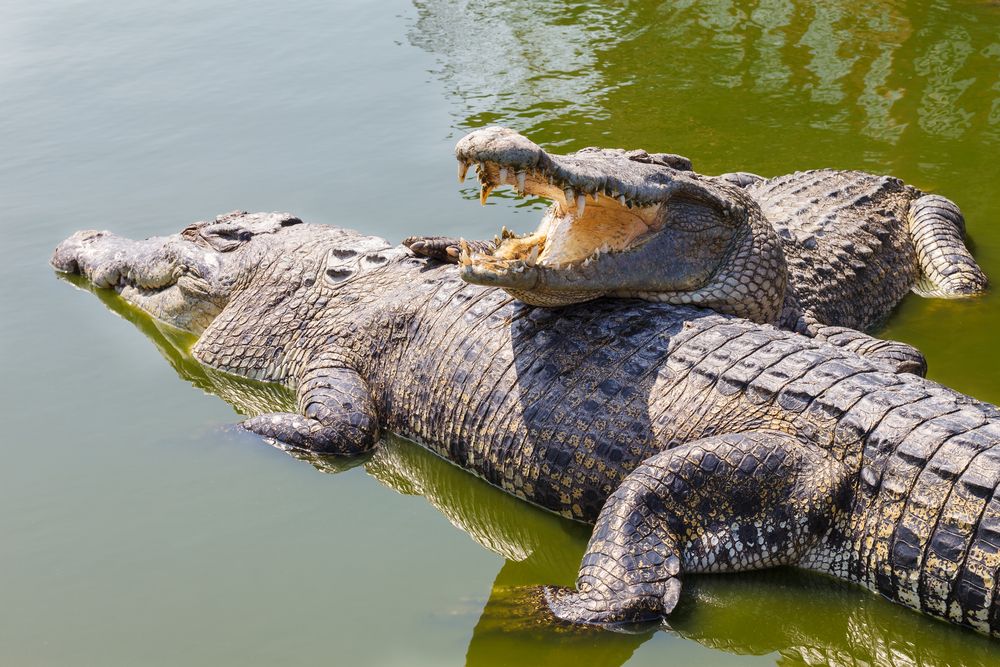Have you ever stopped to think about the story behind that iconic crocodile logo, the one you see on so many shirts and sweaters? It's a symbol recognized all over, yet, you know, its roots go much deeper than just a simple piece of clothing. This familiar emblem, often found on what people call a "crocodile jumper," really connects to a truly fascinating animal. It links us to ancient reptiles that have roamed our planet for ages, and it also ties into a rich history of sports and style.
It’s a bit interesting, isn't it, how a fierce, large, carnivorous reptile, a creature that lives in tropical and subtropical regions, ended up as a fashion statement? Crocodiles, as you might know, make their homes in swamps or along river banks. They are quite adept at catching their prey right there in the water. So, to think of this powerful animal as the face of a comfortable shirt, that's something to ponder, actually.
The idea of a "crocodile jumper" brings together different parts of our world. It speaks to nature's wonders, the way fashion shapes our lives, and even how symbols gain meaning. We will explore the actual animal, its unique characteristics, and then look at how this creature became such a recognizable mark in clothing. This is, in a way, a journey into the meaning behind a familiar image.
Table of Contents
- The Animal Behind the Emblem: Understanding Crocodilians
- From Swamp to Style: The Lacoste Story
- The Crocodile in Culture and Story
- Frequently Asked Questions About the Crocodile Jumper
- Wrapping Up: The Crocodile Connection
The Animal Behind the Emblem: Understanding Crocodilians
When we talk about a "crocodile jumper," it's helpful to first think about the actual crocodile. This creature is, you know, a large, carnivorous reptile. It belongs to a group called Crocodilia. These animals are found in places that are tropical and subtropical, where it's warm and humid. They've been around for a very long time, and they really are quite impressive.
A Look at Crocodilian Life
Crocodiles, as a matter of fact, spend a lot of their time in water. They live in swamps or right on the banks of rivers. They are, you know, incredibly good at hunting in these watery environments. They typically catch their prey right there in the water, using their powerful bodies and keen senses. This way of life makes them truly unique among reptiles, that's for sure.
The broader group of animals that includes crocodiles is called crocodilians. This group, you know, also has alligators, caimans, and gharials. There are, apparently, 23 different species that make up the order Crocodilia. So, when someone mentions a crocodile, they're talking about just one part of this bigger family of reptiles, which is pretty interesting.
Remarkable Physical Traits
Crocodilians have some really cool physical features. For instance, many of them have a laterally compressed tail. This kind of tail is very useful for propelling them through the water. It acts like a powerful paddle, helping them move quickly and gracefully. This is, you know, a key adaptation for their watery homes.
Some other interesting creatures, like crocodile tegus, are also excellent swimmers. They use their tails to move through the water, much like actual crocodiles. These lizards, you know, might forage in water, looking for food. If a predator comes near, they escape by diving into the water, which is a very effective trick, actually.
Then there are animals like crocodile monitors. They use their long, prehensile tails in a couple of ways. When they are climbing in tree canopies, their tails act as counterbalances, helping them stay steady. If they feel threatened, you know, these tails can also be used as effective whips. Their teeth are, in fact, very long and fang-like, which is another notable feature.
Different Types of Crocodilians
Among the many types, the Morelet's crocodile, known as Crocodylus moreletii, is a smaller kind of crocodilian. It has been recorded at lengths up to 11.5 feet, which is about 3.5 meters. It looks a bit like the Cuban crocodile, but it has its own distinct features. These unique characteristics help tell it apart, even to the casual observer, you know.
The information we have on crocodilians, including crocodiles and false gharials, comes from many sources. These sources help us learn about all the different kinds of these animals: crocodiles, alligators, caimans, and gharials. It’s important, you know, to understand the variety within this ancient group of reptiles.
From Swamp to Style: The Lacoste Story
Now, let's talk about how the crocodile went from living in a swamp to becoming a famous logo on a "crocodile jumper." This story really starts with a person, not the animal itself. It's a tale of sports, nickname, and, you know, a new kind of clothing that changed fashion.
Rene Lacoste: The Crocodile Himself
The well-known Lacoste sports shirt, with its little alligator logo, was named for its creator. This person was a tennis professional named Rene Lacoste. He was, you know, given the nickname "the crocodile." This nickname stuck with him because of his tenacious playing style on the tennis court. He just wouldn't give up, which is pretty much like a crocodile, actually.
So, it was this personal nickname that led to the famous emblem. Rene Lacoste's determination and fighting spirit earned him that animal association. It's a really good example of how a personal trait can become a lasting symbol. This is, in a way, the origin of the "crocodile jumper" as we know it today.
The Shirt That Changed Fashion
The shirt itself was a cotton pique sports shirt. It was worn as a piece of fashion, and it became very popular. This shirt, you know, was different from the stiff, traditional tennis wear of its time. It offered more comfort and freedom of movement, which was a pretty big deal back then.
The little alligator logo, which many people call a crocodile, became instantly recognizable. It turned the shirt into more than just sportswear. It became a fashion statement, a symbol of casual elegance. This, you know, is how the "crocodile jumper" got its start, transforming a nickname into a global brand.
The Crocodile in Culture and Story
The crocodile is not just an animal or a logo; it also holds a special place in human culture. It appears in stories, art, and even in how people understand the world. This, you know, shows how powerful animal symbols can be.
Ancient Folklore and Meaning
In some cultures, like that of the Iatmul people, the crocodile is a very important animal. It's central to their folklore and mythology. The patterns they create, you know, are said to look like the skin of the crocodile. This suggests a deep connection and respect for the animal.
The Iatmul also celebrated important events, and the crocodile was often part of these celebrations. This shows how deeply woven the animal is into their traditions and beliefs. It's not just an animal; it's a part of their identity and history, you know, which is really something.
Modern Interpretations
Even in modern stories, the crocodile can represent complex ideas. There is, for example, a chapter called "Crocodile" in a story. This chapter, you know, is particularly effective. It captures the conflict that exists between what people pretend in public and what is true in their private lives.
A schoolgirl named Ola, you know, gets a glimpse of this conflict. This happens after she shares a moment that reveals something deeper. So, the crocodile, in this context, becomes a way to talk about hidden truths and the differences between how things appear and how they really are. It’s a powerful image, really.
Frequently Asked Questions About the Crocodile Jumper
Here are some common questions people often ask about the "crocodile jumper" and the animal it represents:
What is the difference between a crocodile and an alligator?
Well, you know, crocodiles and alligators are both part of the crocodilian group, but they have distinct features. Crocodiles typically have a more V-shaped snout, and their fourth lower tooth sticks out when their mouth is closed. Alligators, on the other hand, usually have a U-shaped snout, and their upper jaw covers their lower teeth when their mouth is shut. These differences, you know, help tell them apart in the wild.
Why is the Lacoste logo an alligator, not a crocodile?
Actually, that's a common point of confusion. The logo is, you know, indeed an alligator, even though the founder, Rene Lacoste, was nicknamed "the crocodile." The story goes that he made a bet for an alligator skin suitcase, and his tenacity on the court earned him the "crocodile" nickname. When it came to the logo, however, an American friend drew an alligator, and that's what stuck. So, while he was the crocodile, the emblem became an alligator, which is a bit of a quirk, really.
Do all crocodilians live in water?
Crocodilians, like crocodiles, alligators, caimans, and gharials, certainly spend a lot of their time in water. They live in places like swamps, rivers, and even some coastal areas. They are, you know, excellent swimmers and hunt in the water. However, they also spend time on land, especially for basking in the sun or nesting. So, while water is central to their lives, they do, in a way, use both land and water environments.
Wrapping Up: The Crocodile Connection
The "crocodile jumper," whether you think of it as a fashion item or a symbol, really connects us to some interesting ideas. It's a reminder of the powerful, ancient reptiles that live in our tropical and subtropical regions. These creatures, you know, with their unique physical traits and their lives spent in swamps and on river banks, are truly remarkable. They are, you know, large, carnivorous reptiles of the order Crocodilia.
The story of the Lacoste shirt, which is a type of "crocodile jumper," shows how a nickname can become a global symbol. Rene Lacoste's "crocodile" spirit led to a cotton pique shirt with an alligator logo that became a fashion staple. It was worn as a fashion statement, and it still is, you know, a very popular item today.
Beyond fashion, the crocodile holds a special place in folklore, like with the Iatmul people, where patterns resemble its skin. It's a very important animal in their mythology. It also appears in stories, reflecting deeper truths, like in the chapter "Crocodile," where a schoolgirl, Ola, gets a glimpse of conflict between public fictions and private realities. So, the "crocodile jumper" is more than just clothing; it's a link to nature, history, and culture. Learn more about animals and their symbols on our site, and perhaps explore more about the history of iconic fashion brands.
For more on the fascinating world of crocodilians and their incredible adaptations, you might want to check out information from scientific sources. For instance, you could look at resources like the IUCN Crocodile Specialist Group for detailed information on these amazing creatures.



Detail Author:
- Name : Jensen Kuhic IV
- Username : wisozk.roderick
- Email : santa.runolfsdottir@yahoo.com
- Birthdate : 1989-07-22
- Address : 2235 Skiles Throughway Gutmannhaven, SD 47341-7692
- Phone : 878-743-6049
- Company : Swift, Bahringer and Block
- Job : Medical Laboratory Technologist
- Bio : Amet laboriosam autem ea nostrum magnam maxime. Fugit sequi qui libero dolor sint. Eum fugiat velit ad voluptas et similique nihil. Qui aliquam incidunt hic reiciendis quod eos.
Socials
facebook:
- url : https://facebook.com/ahagenes
- username : ahagenes
- bio : Et eos provident provident assumenda distinctio est.
- followers : 6423
- following : 1348
linkedin:
- url : https://linkedin.com/in/arlene_hagenes
- username : arlene_hagenes
- bio : Perferendis praesentium praesentium doloribus.
- followers : 4297
- following : 1128

